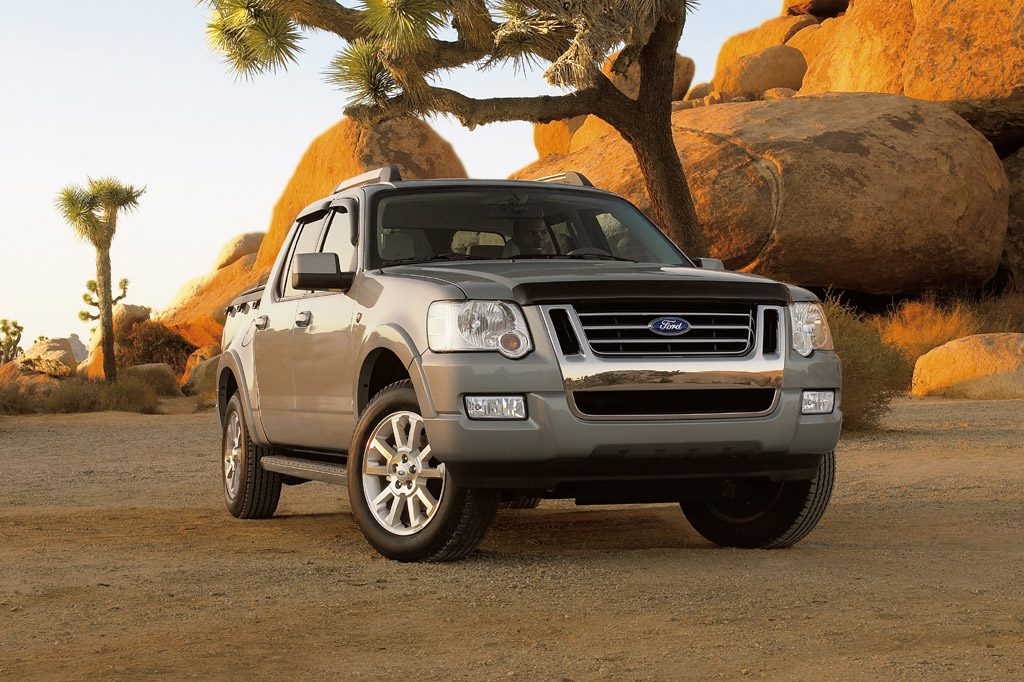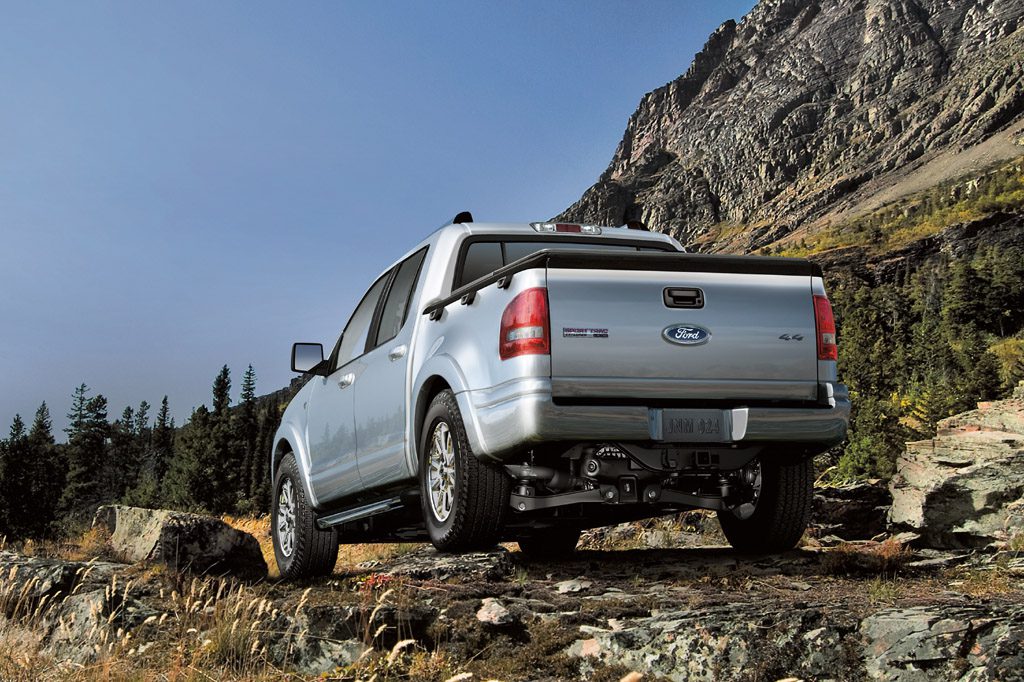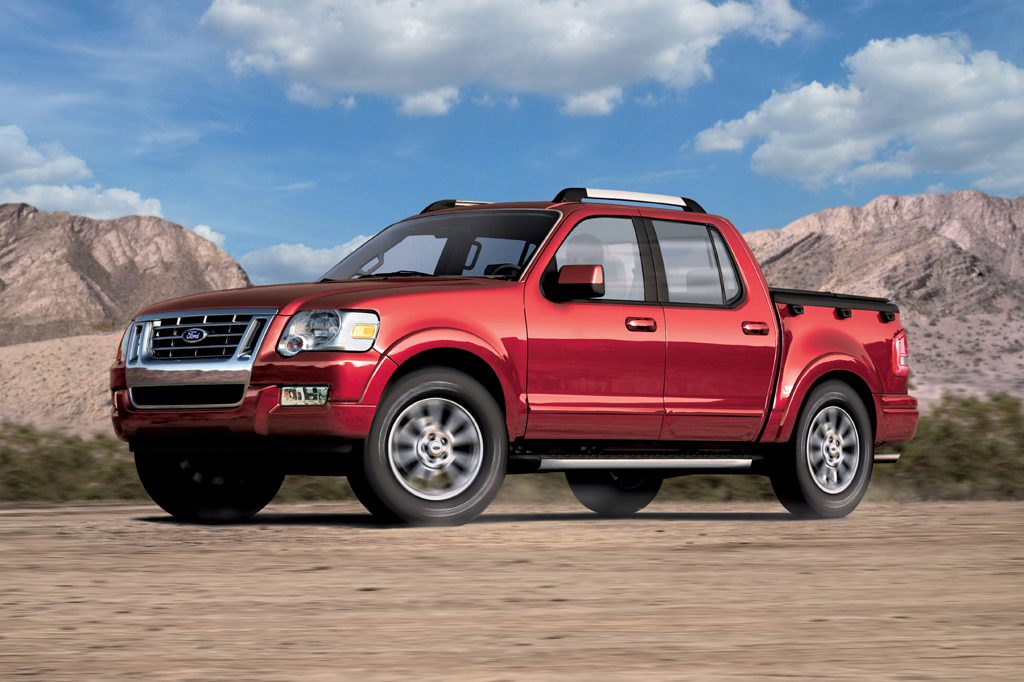| Compact pickup truck; Built in USA |
|
|
| Good condition price range: $13,500 – $26,000* |

2008 Ford Explorer Sport Trac

2008 Ford Explorer Sport Trac

2008 Ford Explorer Sport Trac
| Pros: |
|
| Cons: |
|
Redesigning for 2007 put the Sport Trac in step with its parent SUV for performance and refinement, plus key safety features such as the standard antiskid system and available curtain side airbags. Fuel economy with the V8 is a big negative factor. Sport Trac is also more “trucky” than the Honda Ridgeline, but this “Explorer pickup” deserves a look if you seek a truck’s utility but don’t want-or need-a traditional full-size model.
Overview
Ford’s combination of crew-cab pickup truck and SUV was redesigned for 2007, adding safety features, available V8 power, and an independent rear suspension. Like the 2001-05 Sport Trac, it was based on Ford’s Explorer sport-utility vehicle but added a 4×5-foot open cargo bed at the rear. Wheelbase grew by 5 inches versus the previous Sport Trac, and was 16 inches longer than Explorer’s. Sport Tracs seated five, and offered a power rear window. The cargo box, now made of dent-resistant composites, had three in-floor covered bins with drain plugs. Unlike the midsize Explorer SUV, the Sport Trac qualified as a compact vehicle.
Like Honda’s Ridgeline, Sport Trac had an independent rear suspension designed to provide a more car-like ride than the solid rear axle common to pickups. XLT and uplevel Limited models were offered. A 210-horsepower V6 was standard. A V8 was optional for the first time; it generated 292 horsepower. Both engines teamed with automatic transmissions: a five-speed for the V6, and a six-speed for the V8.
Sport Tracs came with rear-wheel drive or Ford’s Control Trac four-wheel drive, which could be left engaged on dry pavement and included low-range gearing. Antilock braking and antiskid control with rollover sensors were standard. So were front side airbags. Curtain side airbags that covered both seating rows were optional, and included rollover deployment. Other options included a heated windshield, rigid bed cover, frame bed extender, DVD entertainment, and rear obstacle detection.
Except for the Chevrolet Avalanche and Honda Ridgeline, Ford’s Sport Trac had little direct competition. Conventional-pickup rivals may include the Dodge Dakota and Toyota Tacoma.
Yearly Updates
| 2008 Explorer Sport Trac Several new features became available for 2008, including voice control for the optional navigation system. Ford’s new Sync system, which allowed voice control for cell phones and MP3 players, also joined the option list. |
| 2009 Explorer Sport Trac The 2009 Ford Explorer Sport Trac was largely unchanged. |
| 2010 The 2010 Ford Explorer Sport Trac was largely unchanged for what was its final model year. |
